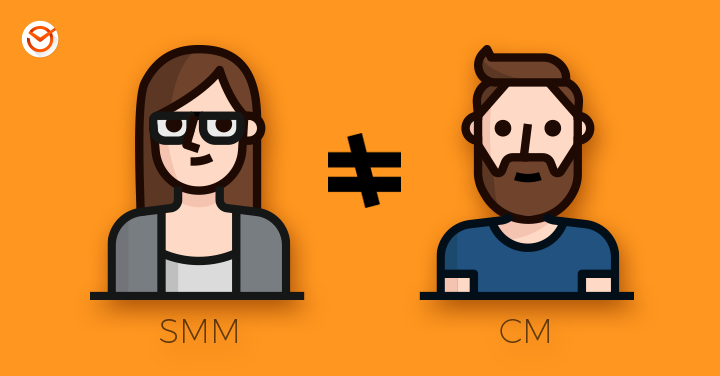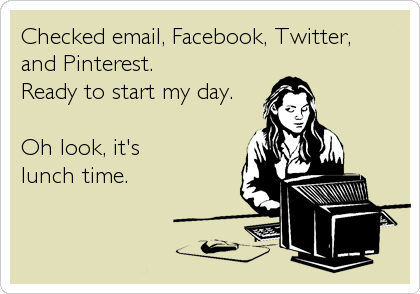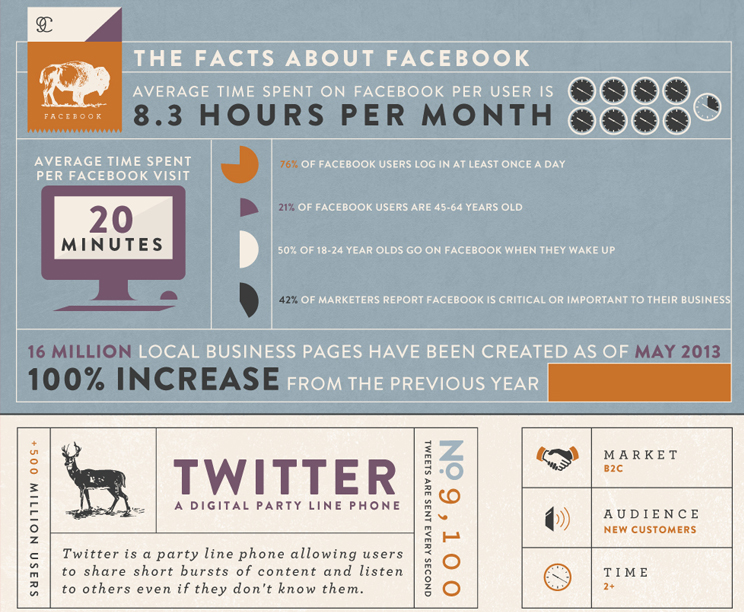
With regards to that, I mean that I’ve also been reading lots of publications on LinkedIn to analyze these positions and I can confirm two things:
- There is a growing division between the original positions of Social Media Manager and Community Manager, creating a proliferation, basically dozens of new job titles. For example, one is already pretty well known: Social Media Strategist. But we’re also starting to hear of some others like: Social Media Planner, Social Media Content Manager, Social Media Digital Content Editor, Digital Community Manager , Corporate Community Manager , Traveling Community Manager, and so on. More and more job profiles are being divvied up and therefore splitting up the “original” job and tasks.
- Despite the different labels, when it comes to the social media manager job description, responsibilities fall into two large groups: operational and strategic . Companies use the terms Social Media Manager or Social Media Strategist interchangeably, to describe the role responsible for the decisions made at the strategic level on various platforms. Community Manager, Digital Community Manager, etc., is after all, who will run the operative part of the formula.
So, aside from all those new roles, there is a reality: those positions are only available in large, huge companies, such as advertising agencies, newspapers, and media agencies that allow for large budgets, volumes of information, lots of resources, and communities. So, for those of us on the other side of that reality, those titles are just too large and extravagant.
In the most common cases, a SM Manager / Strategist or CM would be a person from the office or working remotely from home, like this:

You might say: “The confusion is clear, but, so … there’s no definition or clarification?”
Yes, there is. Now let’s turn to the “theoretical” part.
Here we go! Yeah!

1- What does a Social Media Manager do vs. a Community Manager?
As we said in the beginning, the SM Manager has a role that mainly involves the “macro” social media decisions. The one-on-one with users, is somewhat typical of the Community Manager. So, I managed to filter certain tasks that were being mixed up, and I came up with the following list that describes the tasks that go with the SM Mger rather than the CM.
Responsibilities: SM Manager / Strategist:
- Know or be familiar with the industry in which the company or business is in.
- Design a social media strategy that’s in line with the brand identity, the company’s audience, and goals.
- Administer and control budgets for different strategic actions.
- Define strategies to build/enhance the follower/fan base and to develop channels that strengthen engagement.
- In coordination with the marketing team, define promotion campaigns, competitions, paid-advertising, events, and product launches, in order to implement them on various platforms that have been decided to be used.
- Define content strategy, communication style, and control the execution of calendar content.
- Define and segment the user or “marketing persona” who the communication and actions will be directed towards.
- Define and control: social media KPIs, conversions and ROI objectives (always in coordination with the sales and marketing department of the company).
- Select what tools and apps will be used to perform tasks.
- Design a plan to tackle a social media reputation crisis.
- Define an SEO strategy.
- Guide research for market and industry insights in order to apply different strategies.
- Study and analyze the results of reports provided by the Community Manager to detect both threats and opportunities, as well as to measure the effectiveness of various actions. Based on this, make decisions concerning each of the above aspects, in order to make improvements, changes, or a change of strategic direction, etc.
- Work closely with the client and the various departments of the company, to discuss the results and propose strategic improvements: Public Relations, Marketing, Product, Sales, Directory.
- Work on the development of strategic alliances within the social media industry for future actions that can strengthen the growth of communities and the brand.
So far, this is what we can say are the characteristics of an SMM, which leaves in general terms, the mission of building, managing and administering a community in the various social media platforms for the Community Manager, along with the aim of establishing and sustaining a lasting and reciprocal relationship with it. Inspired by the Manifesto of Community Managers created by Tim McDonald and colleagues, I created the following list.
Responsibilities: Community Manager:

- “Represent the spirit” of the brand or company, and be it’s number one advocate.
- Create pages on social media platforms that were selected in the strategy. Optimize them as defined by the brand image of the company.
- Create, recognize, find, and cure valuable content to the community and that follows the “editorial” line proposed by the strategy. In this case, it may be necessary to work with a graphic designer to optimize the content.
- Update pages: manage scheduling, Scheduling and publishing posts , tweets, using tools such as Postcron.
- Listen to users and respond to their comments and inquiries, to make them feel valuable. -Customer service-
- Identify, cultivate, and strengthen relationships with brand influencers, so that they become followers and advocates of it.
- Moderate activity and conversations on the platform.
- Create a space for communication , participation and collaboration.
- Implement actions such as competitions that are defined by the SMM.
- Monitor trends in social media to stay updated across different platforms, not only with the content that’s already been created or cured.
- Identify needs and preferences of users
- Constantly control basic indicators such as likes, clicks, reach, participation, number of comments.
- Be the voice of the community and provide the company and SMM with insights and opportunities for improvements obtained by the opinions and behavior of the community.
- Give daily feedback about the activity on the platforms and review metrics with the Social Media Manager
- Collect the results of different reports obtained from the analytical and monitoring tools and prepare reports for analysis by the various departments and especially by the SMM.
Something is probably escaping me, but this is the result of filtering a bit of both profiles. Surely, many are concluding that you do both jobs, SMM as well as the CM. But at least now, you can distinguish which tasks correspond with each position 🙂
2- What knowledge or skill set should each position have? (Have this in mind for a Social Media Manager job description)
Skill Set Community Manager:
- Design, Photoshop, Text Editing, Power Point and Excel skills
- Excellent written and oral communication skills
- Knowledge of HTML and web site management
- Familiarity with web analytics platforms and monitoring
- Knowledge of measurement tools and ability to respond
- Familiarity with managing blogs, discussion forums, ratings, and reviews.
- Ability to manage MACs just as well as PCs
Skill Set Social Media Manager / Strategist:
- Knowledge of Marketing, Management, Branding, and Content Development.
- Familiarity with web analytics systems, business analytics, and social metrics.
- Familiarity with the different systems of advertising campaigns and paid promotion throughout various social media platforms.
- Knowledge of various ROI analysis systems, conversions, and social media KPIs.
- Knowledge of different techniques for developing strategies such as “Search Engine Marketing ” and SEO.
- Knowledge of techniques and methodologies in order to guide research.
- Photoshop, Text Editors, Power Point, and Excel skills.
- Excellent written and oral communication skills.
- HTML, site development and blogging experience.
As you’ll see, several skills are shared by both roles, but the focus is distinct. If you’d like to review some examples of social media manager job description on LinkedIn, here are the links:
Social Media Manager job description
Social Media Strategist Jobs
Community Manager Jobs
3- ¿What qualities and/or profile should a community/social media manager have?
Beyond the tasks, it’s important to know what personal characteristics the person should have, as they will be interacting with the community and/or planning the development strategy. Here we’ve put together a summary of the skills that for the most part required for this position:
- Passionate about the work
- Analytical capacity
- Creativity
- Ability to communicate effectively on and off-line: with users, customers, and various departments
- Ability to sell an idea or strategy
- Dedication
- Organization
- Adaptability: must be on the community’s side one minute and in another minute have to think like the CEO
- Be thorough and observant in order to detect threats, opportunities, and trends
- Have discretion and good judgment in order to analyze and react to comments, feedback, crisis situations, or even to select or cure content.
- Proactive, efficient and independent
- Empathy: know the characteristics of the users and have the ability to understand what they need and their point of view in order to engage in conversation one by one.
- Teamwork.
4- How can you be a more productive community/social media manager?
Without a doubt, one of the keys to being more productive is using tools and apps that help you avoid getting wrapped up in tasks that are definitely important and necessary, but also repetitive and can be easily and safely be automated. Therefore, I bring you a few excellent choices to begin optimizing your performance:
1 – Postcron: with this tool you can manage multiple accounts on Facebook and Twitter, as well as plan posts, then schedule and automatically publish them. Now that the images are the protagonists on social networks, Postcron offers a feature called “Multiupload”, which allows for the scheduling of more than 300 pictures in just seconds, including a description or phrase that shows up with the post. So, you just put together a file with all photos or images, select those that interest you, upload, and in an instant, you have scheduled posts for a month or more! The Bulk-Scheduling allows you to use a spreadsheet to create and schedule over 300 posts or tweets with images, links, or text only. In a few minutes, the information is uploaded, scheduled and programmed. Also, Postcron not only allows you to manage content on different platforms, but now also facilitates obtaining content, whether to take it as inspiration or to cure it and then re-publish it. We all get a little exhausted with creativity sometimes, but we can’t stop updating accounts. So, with this new tool you can get Recommended Content based on your preferences, industry, and influencers. Thus, you can insert your own content and cured content so that you always provide your communities with quality material. Be sure to read this article which will show you “step by step” how to use this feature.
2- Socialmention: you can use this tool to check references and trends across Twitter and the web. Ideal for brand monitoring.
3- Quintly – Spring Metrics – SocialBakers: are specialized analytical platforms that provide reports of conversations, performance, campaigns, keywords, landing pages, SEO, and email campaigns, among other virtues.
4- Storify – Contentgems – Curalate: are just some tools through which you can also find and cure content for social networks.
In addition to tools, you’ll also need to organize the content: if you adminster a blog, remember to put together a content calendar, it’s the key to ensuring it’s success, and who it will reach. Be sure to check out this article, where we show you how to create one.
Just like we included in the job description of #communitysocialmediamanager, creating pages and constantly optimizing them requires knowing the dimensions of the images used for each platform, either for the cover photo, the profile picture, or even where it is placed in the timeline or content news section. Be sure to check the complete guide to the dimensions on social networks updated in 2014.
4- Tips from other community/social media managers on how to be a better community/social media managers.
I don’t know if you know yet, but very recently, the Community Manager “Round Table” was created. It has annual conferences where representatives from the offices of SMM and CM meet to discuss the past, present and future of these roles just as much as the field of social media. In one such event, some outstanding CMs and SMMs were asked to write one piece of advice they would give to another colleague who is just getting started. Responses were collected, the most repeated were filtered, and coincidences were sought. In conclusion, the following 13 items were presented:
1. Always be planning/updating your strategy while keeping in mind where your community will be a year from now.
2. Get out from behind your keyboard every so often. Talk with your members (live or on the phone).
3. Don’t take yourself (or others) too seriously – people are weird.
4. Review, admit failure, adjust.
5. Go slow. Crawl, walk, run. Don’t assume they understand.
6. Have a good sense of HUMOR!!
7. Make collaboration a verb, not a noun. It’s more than a destination, it’s a mindset.
8. Just breathe!
9. Your data will set you free. Embrace it!
10. Governance is not a dirty word.
11. Don’t do it alone. Find allies, advocates and volunteers to help.
12. Be patient and persistent.
13. Research other communities “doing it right” for some inspiration.
Some statistics:
For those of you that need some “numerical/statistical Love” in addition to the tips 🙂 Take a look at an excellent infographic of 9clouds that poses the situation of the social media field for the upcoming year. It includes some data that can help you polish planned strategies for this year:

To recap….
So, we can conclude that even though in real life there is hardly a pragmatic division of these roles, we could say that in theory, the task of the Social Media Manager is directly related to the strategic decision-making: from the selection of the platforms which will have presence, communication style and what type of content is shared, what steps will be taken in a reputation crisis, to the analysis of results to redirect the current strategy or not.
The Community Manager, on the other hand, is the representative of the brand and is the person who approaches the community. It’s also the user representative for the company and who can provide insights and opinions they gets from the users. Of course, the larger the size of the company and the budget available for the field of social networks, the greater the chances that different people and teams can take on these different roles.
Do you agree with these definitions, skills, advice?
I hope you find it helpful, and I sincerely would like to hear your comments to improve this post with your input and experiences!
Thanks 🙂

